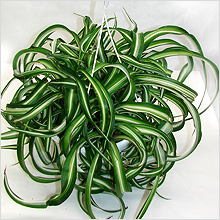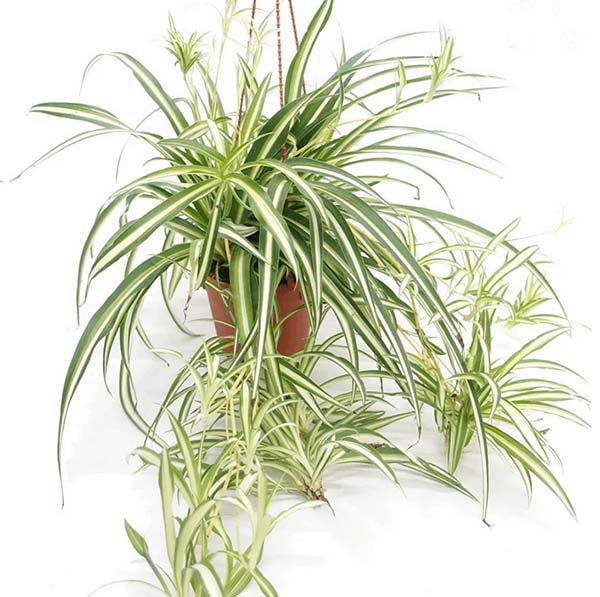Chlorophytum (Spider Plant) - the most undemanding indoor plant
Spider Plant (Chlorophytum) is a perennial herbaceous plant with narrow green or white-green leaves and dangling air runners with small clusters of new plants. It is found in many homes and is known for its incredibly easy care - it's one of those plants you can "plant and forget."

Spider Plant is also known as the spider plant. It grows in any soil, in a pot of any size, in the sun or shade, in a cold or warm room, on a shelf - practically anywhere. If you don't water the spider plant for a month, it may fade, lose its luster, and droop, but it won't dry out. And if you don't skimp on water, the spider plant will grow roots that won't fit in the pot, and it will produce many "babies" so that a large mass of leaves can evaporate moisture.
If you're not a fan of long-term care for indoor plants or frequently leave home for a couple of days or weeks - get yourself a spider plant.
The native land of the spider plant is South Africa, where it grows as an epiphyte on tree bark. An adult spider plant can reach up to 50 cm in diameter and height. The long leaves of the spider plant can be green or pale green with white or cream longitudinal stripes. From the center of the plant, long stems with small leaves and flowers cascade down to 80-100 cm. The flowers of the spider plant are small white stars at the ends of long stems, which later turn into rosettes with aerial roots.
The spider plant is so named because of its spider-like offsets, or spiderettes, which dangle down from the mother plant like spiders on a web.
The roots of the spider plant are thick and fleshy, accumulating moisture. In case of insufficient watering, the spider plant can survive due to the moisture reserves in its roots.


The lifespan of the Chlorophytum is more than 10 years.
Spider plants look best in hanging baskets or on tall stands or pedestals to show off their trailing foliage.
Beneficial properties. There are many publications on the ability of this indoor plant to quickly and effectively purify the air from harmful impurities. It has one of the top removal rates of formaldehyde from tainted indoor air. Perhaps the spider plant can "extract" nutrients from the air, and it needs various trace elements for normal life.
Spider Plant Care:
Spider plants have a reputation for being unkillable. While not literally true, they are tough plants and spider plant diseases and pests are few and far between. Poor cultural care can damage and even kill them, however.

- Light: The spider plant grows well in both sunlight and partial shade. In the sun, the leaves become brighter.
- Temperature: The optimal temperature is 65-75°F/18-24°C. It doesn't like the cold; don't expose it to anything below 50°F/10°C..
- Air humidity: The Chlorophytum is quite resistant to dry air in apartments. Spraying is not necessary, but to clean the leaves, give the spider plant a warm shower once a month (25 °C). Do not wipe the leaves - they are very fragile.
- Watering: In winter, water the spider plant once a week, and in summer - every 3 days.
- Fertilization: Spider plant needs to be fed with mineral fertilizers from May to September once a month.
- Repoting: Transplant the spider plant when the developing root system begins to emerge from the pot or lift the plant. It is better to transplant the spider plant in spring, usually every 1-2 years.
- Soil: It is not very demanding on soil. It grows well in a mixture of 3 parts sod soil, 2 parts leaf soil, and 1 part sand.
- Propagation: Spider plant reproduces easily - you can plant rosettes that appear at the ends of air runners or divide the plant.
- Diseases and pests: Like other houseplants, spider plants can be attacked by insect pests including whiteflies, spider mites, scale insects and aphids. Take measures using insecticide at the first signs and repeat the treatment 4 more times with an interval of 8 days.




